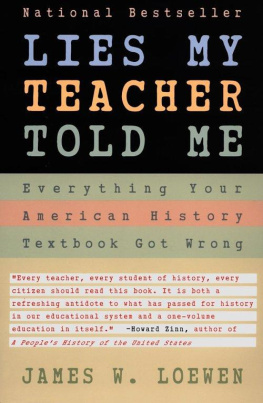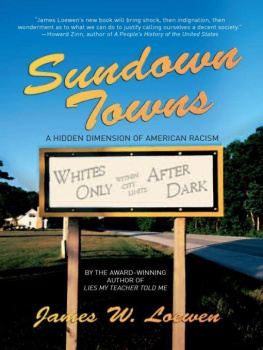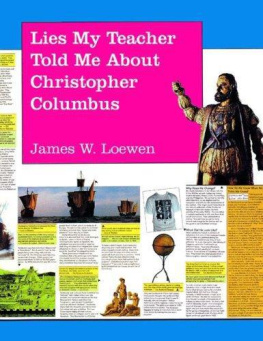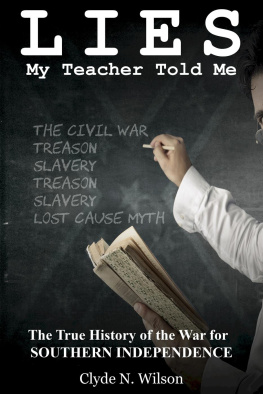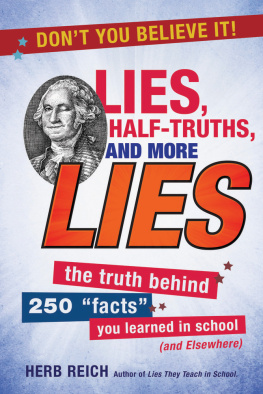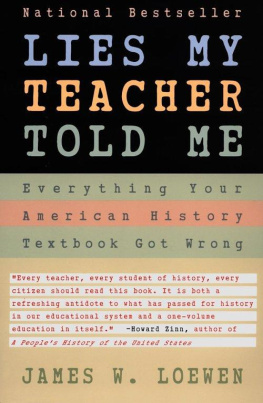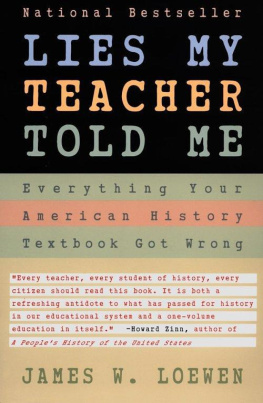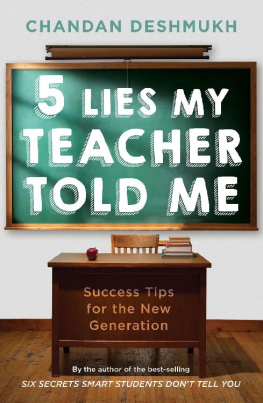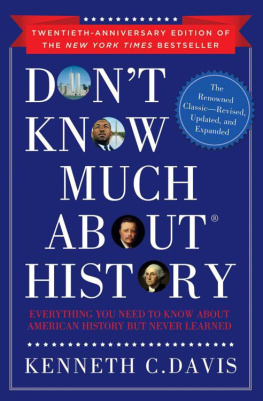7. The Land of Opportunity
High school students have eyes, ears, and television sets {all too many have their own TV sets), so they know a lot about relative privilege in America. They measure their family's social position against that of other families, and their community's position against other communities. Middle-class students, especially, know little about how the American class structure works, however, and nothing at all about how it has changed over time. These students do not leave high school merely ignorant of the workings of the class structure; they come out as terrible sociologists. Why are people poor? I have asked first-year college students. Or, if their own class position is one of relative privilege, Why is your family well off? The answers I've received, to characterize them chari tably, are half-formed and naive. The students blame the poor for not being successful.4 They have no understanding of the ways that opportunity is not equal in America and no notion that social structure pushes people around, influencing the ideas they hold and the lives they fashion.
High school history textbooks can take some of the credit for this state of affairs. Some textbooks cover certain high points of labor history, such as the 1894 Pullman strike near Chicago that President Cleveland broke with federal troops, or the 1911 Triangle Shirtwaist fire that killed 146 women in New York City, but the most recent event mentioned in most books Is the Taft-Hartley Act of fifty years ago. No book mentions the Hormel meat-packers' strike in the mid-1980s or the air traffic controllers strike broken by President Reagan. Nor do textbooks describe any continuing issues facing labor, such as the growth of multinational corporations and their exporting ofjobs overseas. With such omissions, textbook authors can construe labor history as something that happened long ago, like slavery, and that, like slavery, was corrected long ago. It logically follows that unions appear anachronistic. The idea that they might be necessary in order for workers to have a voice in the workplace goes unstated. Textbooks' treatments of events in labor history are never anchored in any analysis of social class,5 This amounts to delivering the footnotes instead of the This photograph of a sweatshop in New York's Chinatown, taken in the early 1990s, illustrates that the working class still works in America, under conditions not so dif ferent from a century ago, often in the same locations.
lecture! Six of Che dozen high school American history textbooks I examined contain no index listing at all for social class, social stratification,11 class structure, income distribution, inequality, or any conceivably related topic. Not one book lists upper class, working class, or lower class. Two of the textbooks list middle class, but only to assure students that America is a middle class country, Except for slaves, most of the colonists were members of the 'middling ranks,' says Land ofPromise, and nails home the point that we are a middle-class country by asking students to Describe three 'middle-class' values that united free Americans of all classes. Several of the textbooks note the explosion of middle-class suburbs after World War II. Talking about the middle class is hardly equivalent to discussing social stratification, however; in fact, as Gregory Mantsios has pointed out, such references appear to be acceptable precisely because they mute class differences."
Stressing how middle-class we all are is particularly problematic today, because the proportion of households earning between 75 percent and 125 percent of the median income has fallen steadily since 1967. The Reagan-Bush administrations accelerated this shrinkage of the middle class, and most families who left its ranks fell rather than rose,7 This is the kind of historical trend one would think history books would take as appropriate subject matter, but only four of the twelve books in my sample provide any analysis of social stratification in the United Stales. Even these fragmentary analyses are set mostly in colonial America. Land ofPromise lives up to its reassuring title by heading its discussion of social class Social Mobility. One great difference between colonial and European society was that the colonists had more social mobility, echoes TheAmerican Tradition. In contrast with contemporary Europe, eighteenthcentury America was a shining (and of equality and opportunity-with the notorious exception of slavery, chimes in The American Pageant. Although The Challenge of freedom identifies three social classesupper, middle, and lower among whites in colonial society, compared to Europe there was greater social mobility
Never mind that the most violent class conflicts in American historyBacon's Rebellion and Shays's Rebelliontook place in and just after colonial times. Textbooks still say that colonial society was relatively classless and marked by upward mobility And things have gotten rosier since. By 1815, The Challenge ofFreedom assures us, two classes had withered away and America was a country of middle class people and of middle class goals. This book returns repeatedly, at intervals of every' fifty years or so, to the theme of how open opportunity is in America. In the years after 1945, social mobilitymovement from one social class to anotherbecame more widespread in America, Challenge concludes, This meant that people had a better chance to move upward in society The stress on upward mobility is striking. There is almost nothing in any of these textbooks about class inequalities or barriers of any kind to social mobility. What conditions made it possible for poor white immigrants to become richer in the colonies? Land ofPromise asks. What conditions made/ make it difficult? goes unasked. Textbook authors thus present an America in which, as preachers were fond of saying in the nineteenth century, men start from humble origins and aitain the most elevated positions.
Sodal class is probably the single most important variable in society. From womb to tomb, it correlates with almost all other social characteristics ofpeople that we can measure. Affluent expectant mothers are more likely to get prenatal care, receive current medical advice, and enjoy general health, fitness, and nutrition. Many poor and working-class mothers-to-be first contact the medical profession in the last month, sometimes the last hours, of their pregnancies. Rich babies come out healthier and weighing more than poor babies. The infants go home to very different situations. Poor babies are more likely to have high levels of poisonous lead in their environments and their bodies. Rich babies get more time and verbal interaction with their parents and higher quality day care when not with their parents. When they enter kindergarten, and through the twelve years that follow, rich children benefit from suburban schools that spend two to three times as much money per student as schools in inner cities or impoverished rural areas. Poor children are taught in classes that are often 50 percent larger than the classes of affluent children. Differences such as these help account for the higher school-dropout rate among poor children.
Even when poor children are fortunate enough to attend the same school as rich children, they encounter teachers who expect only children of affluent families to know the right answers. Social science research shows that teachers are often surprised and even distressed when poor children excel. Teachers and counselors believe they can predict who is college material, Since many working-class children give off the wrong signals, even in first grade, they end up in the general education track in high school If you are the child of lowincome parents, the chances are good that you will receive limited and often careless attention from adults in your high school, in the words of Theodore Sizer's best-selling study of American high schools, Horace's Compromise. If you are the child of upper-middie-income parents, the chances are good that you will receive substantial and careful attention,111 Researcher Reba Page has provided vivid accounts of how high school American history courses use rote learning to turn off lower-class students. Thus schools have put into practice Woodrow Wilson's recommendation: We want one class of persons to have a liberal education, and we want another class of persons, a very much larger class of necessity in every society, to forgo the privilege of a liberal education and fit themselves to perform specific difficult manual tasks."IJ As if this unequal home and school life were not enough, rich teenagers then enroll in the Princeton Review or other coaching sessions for the Scholastic Aptitude Test. Even without coaching, affluent children are advantaged because their background is similar to that of the testmakers, so they are tH&/

